Reduced Fracture Toughness of Metallic Glass at Cryogenic Temperature
Abstract
:1. Introduction
2. Experimental Procedure
3. Results
4. Discussion
5. Conclusions
Supplementary Materials
Acknowledgments
Author Contributions
Conflicts of Interest
References
- Johnson, W.L. Bulk glass-forming metallic alloys: Science and technology. MRS Bull. 1999, 24, 42–56. [Google Scholar] [CrossRef]
- Wang, W.H.; Dong, C.; Shek, C.H. Bulk metallic glasses. Mater. Sci. Eng. R 2004, 44, 45–89. [Google Scholar] [CrossRef]
- Schuh, C.; Hufnagel, T.; Ramamurty, U. Mechanical behavior of amorphous alloys. Acta Mater. 2007, 55, 4067–4109. [Google Scholar] [CrossRef]
- Egami, T.; Iwashita, T.; Dmowski, W. Mechanical properties of metallic glasses. Metals 2013, 3, 77–113. [Google Scholar] [CrossRef]
- Kruzic, J.J. Bulk metallic glasses as structural materials: A review. Adv. Eng. Mater. 2016, 18, 1308–1331. [Google Scholar] [CrossRef]
- Pampillo, C.; Chen, H. Comprehensive plastic deformation of a bulk metallic glass. Mater. Sci. Eng. 1974, 13, 181–188. [Google Scholar] [CrossRef]
- Takeuchi, S.; Kakegawa, T.; Hashimoto, T.; Tsai, A.-P.; Inoue, A. Low temperature mechanical properties of bulk metallic glasses. Mater. Trans. JIM 2000, 41, 1443–1447. [Google Scholar] [CrossRef]
- Li, H.; Fan, C.; Tao, K.; Choo, H.; Liaw, P.K. Compressive behavior of a Zr-based metallic glass at cryogenic temperatures. Adv. Mater. 2006, 18, 752–754. [Google Scholar] [CrossRef]
- Kawashima, A.; Zeng, Y.; Fukuhara, M.; Kurishita, H.; Nishiyama, N.; Miki, H.; Inoue, A. Mechanical properties of a Ni60Pd20P17B3 bulk glassy alloy at cryogenic temperatures. Mater. Sci. Eng. A 2008, 498, 475–481. [Google Scholar] [CrossRef]
- Vinogradov, A.; Lazarev, A.; Louzguine-Luzgin, D.V.; Yokoyama, Y.; Li, S.; Yavari, A.R.; Inoue, A. Propagation of shear bands in metallic glasses and transition from serrated to non-serrated plastic flow at low temperatures. Acta Mater. 2010, 58, 6736–6743. [Google Scholar] [CrossRef]
- Louzguine-Luzgin, D.V.; Louzguina-Luzgina, L.V.; Churyumov, A. Mechanical properties and deformation behavior of bulk metallic glasses. Metals 2012, 3, 1–22. [Google Scholar] [CrossRef]
- Wang, Y.W.; Bian, X.L.; Wu, S.W.; Hussain, I.; Jia, Y.D.; Yi, J.; Wang, G. Rate dependent of strength in metallic glasses at different temperatures. Sci. Rep. 2016, 6, 27747. [Google Scholar] [CrossRef] [PubMed]
- Bian, X.; Wang, G.; Wang, Q.; Sun, B.; Hussain, I.; Zhai, Q.; Mattern, N.; Bednarčík, J.; Eckert, J. Cryogenic-temperature-induced structural transformation of a metallic glass. Mater. Res. Lett. 2016, 1–8. [Google Scholar] [CrossRef]
- Ritchie, R.O. The conflicts between strength and toughness. Nat. Mater. 2011, 10, 817–822. [Google Scholar] [CrossRef] [PubMed]
- Yi, J.; Seifi, S.M.; Wang, W.; Lewandowski, J.J. A damage-tolerant bulk metallic glass at liquid-nitrogen temperature. J. Mater. Sci. Technol. 2014, 30, 627–630. [Google Scholar] [CrossRef]
- Hufnagel, T.C.; Vempati, U.K.; Almer, J.D. Crack-tip strain field mapping and the toughness of metallic glasses. PLoS ONE 2013, 8, e83289. [Google Scholar] [CrossRef] [PubMed]
- ASTM E399. Standard Test Method for Linear-Elastic Plane-Strain Fracture Toughness KIc of Metallic Materials; ASTM: West Conshohocken, PA, USA, 2009. [Google Scholar]
- Gludovatz, B.; Naleway, S.E.; Ritchie, R.O.; Kruzic, J.J. Size-dependent fracture toughness of bulk metallic glasses. Acta Mater. 2014, 70, 198–207. [Google Scholar] [CrossRef]
- Demetriou, M.D.; Launey, M.E.; Garrett, G.; Schramm, J.P.; Hofmann, D.C.; Johnson, W.L.; Ritchie, R.O. A damage-tolerant glass. Nat. Mater. 2011, 10, 123–128. [Google Scholar] [CrossRef] [PubMed]
- Schroers, J.; Johnson, W.L. Ductile bulk metallic glass. Phys. Rev. Lett. 2004, 93, 255506. [Google Scholar] [CrossRef] [PubMed]
- Lewandowski, J.J.; Wang, W.H.; Greer, A.L. Intrinsic plasticity or brittleness of metallic glasses. Philos. Mag. Lett. 2005, 85, 77–87. [Google Scholar] [CrossRef]
- Zhang, Z.; Keppens, V.; Egami, T. A simple model to predict the temperature dependence of elastic moduli of bulk metallic glasses. J. Appl. Phys. 2007, 102, 123508. [Google Scholar] [CrossRef]
- Garrett, G.R.; Demetriou, M.D.; Chen, J.; Johnson, W.L. Effect of microalloying on the toughness of metallic glasses. Appl. Phys. Lett. 2012, 101, 241913. [Google Scholar] [CrossRef]
- Johnson, W.L.; Samwer, K. A universal criterion for plastic yielding of metallic glasses with a (T/Tg) 2/3 temperature dependence. Phys. Rev. Lett. 2005, 95, 195501. [Google Scholar] [CrossRef] [PubMed]
- Jiang, F.; Jiang, M.Q.; Wang, H.F.; Zhao, Y.L.; He, L.; Sun, J. Shear transformation zone volume determining ductile–brittle transition of bulk metallic glasses. Acta Mater. 2011, 59, 2057–2068. [Google Scholar] [CrossRef]
- Pan, D.; Inoue, A.; Sakurai, T.; Chen, M.W. Experimental characterization of shear transformation zones for plastic flow of bulk metallic glasses. Proc. Natl. Acad. Sci. USA 2008, 105, 14769–14772. [Google Scholar] [CrossRef] [PubMed]
- An, Q.; Garrett, G.; Samwer, K.; Liu, Y.; Zybin, S.V.; Luo, S.N.; Demetriou, M.D.; Johnson, W.L.; Goddard, W.A. Atomistic characterization of stochastic cavitation of a binary metallic liquid under negative pressure. J. Phys. Chem. Lett. 2011, 2, 1320–1323. [Google Scholar] [CrossRef] [PubMed]
- An, Q.; Samwer, K.; Demetriou, M.D.; Floyd, M.C.; Duggins, D.O.; Johnson, W.L.; Goddard, W.A. How the toughness in metallic glasses depends on topological and chemical heterogeneity. Proc. Natl. Acad. Sci. USA 2016, 113, 7053–7058. [Google Scholar] [CrossRef] [PubMed]
- Suh, J.Y.; Dale Conner, R.; Paul Kim, C.; Demetriou, M.D.; Johnson, W.L. Correlation between fracture surface morphology and toughness in Zr-based bulk metallic glasses. J. Mater. Res. 2011, 25, 982–990. [Google Scholar] [CrossRef]
- Garrett, G.R.; Demetriou, M.D.; Launey, M.E.; Johnson, W.L. Origin of embrittlement in metallic glasses. Proc. Natl. Acad. Sci. USA 2016, 113, 10257–10262. [Google Scholar] [CrossRef] [PubMed]
- Wang, G.; Zhao, D.Q.; Bai, H.Y.; Pan, M.X.; Xia, A.L.; Han, B.S.; Xi, X.K.; Wu, Y.; Wang, W.H. Nanoscale periodic morphologies on the fracture surface of brittle metallic glasses. Phys. Rev. Lett. 2007, 98, 235501. [Google Scholar] [CrossRef] [PubMed]
- Buehler, M.J.; Abraham, F.F.; Gao, H. Hyperelasticity governs dynamic fracture at a critical length scale. Nature 2003, 426, 141–146. [Google Scholar] [CrossRef] [PubMed]
- Buehler, M.J.; Gao, H. Dynamical fracture instabilities due to local hyperelasticity at crack tips. Nature 2006, 439, 307–310. [Google Scholar] [CrossRef] [PubMed]
- Wang, G.; Chan, K.C.; Xu, X.H.; Wang, W.H. Instability of crack propagation in brittle bulk metallic glass. Acta Mater. 2008, 56, 5845–5860. [Google Scholar] [CrossRef]
- Li, J.; Wang, Y.W.; Yi, J.; Hussain, I.; Li, R.; Zhang, B.; Wang, G. Strain-energy transport during fracture of metallic glasses. J. Alloy. Compd. 2016, 680, 43–53. [Google Scholar] [CrossRef]
- Liu, Z.Y.; Wang, G.; Chan, K.C.; Ren, J.L.; Huang, Y.J.; Bian, X.L.; Xu, X.H.; Zhang, D.S.; Gao, Y.L.; Zhai, Q.J. Temperature dependent dynamics transition of intermittent plastic flow in a metallic glass. І. Experimental investigations. J. Appl. Phys. 2013, 114, 033520. [Google Scholar] [CrossRef]
- Fineberg, J. The dynamics of rapidly moving tensile cracks in brittle amorphous material. In Dynamic Fracture Mechanics; World Scientific: Hong Kong, China, 2006; pp. 104–146. [Google Scholar]
- Wang, G.; Han, Y.N.; Xu, X.H.; Ke, F.J.; Han, B.S.; Wang, W.H. Ductile to brittle transition in dynamic fracture of brittle bulk metallic glass. J. Appl. Phys. 2008, 103, 093520. [Google Scholar] [CrossRef]
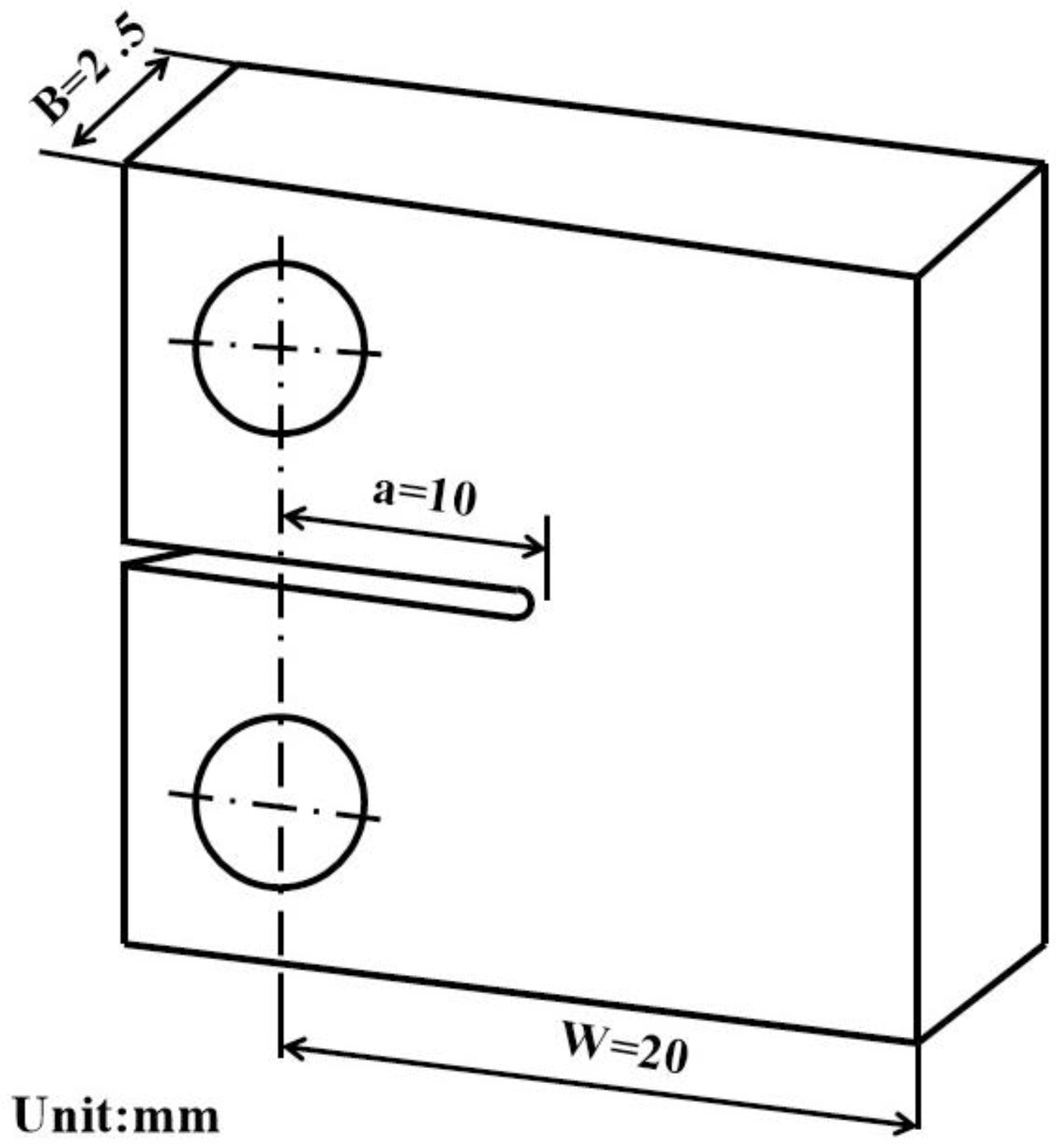
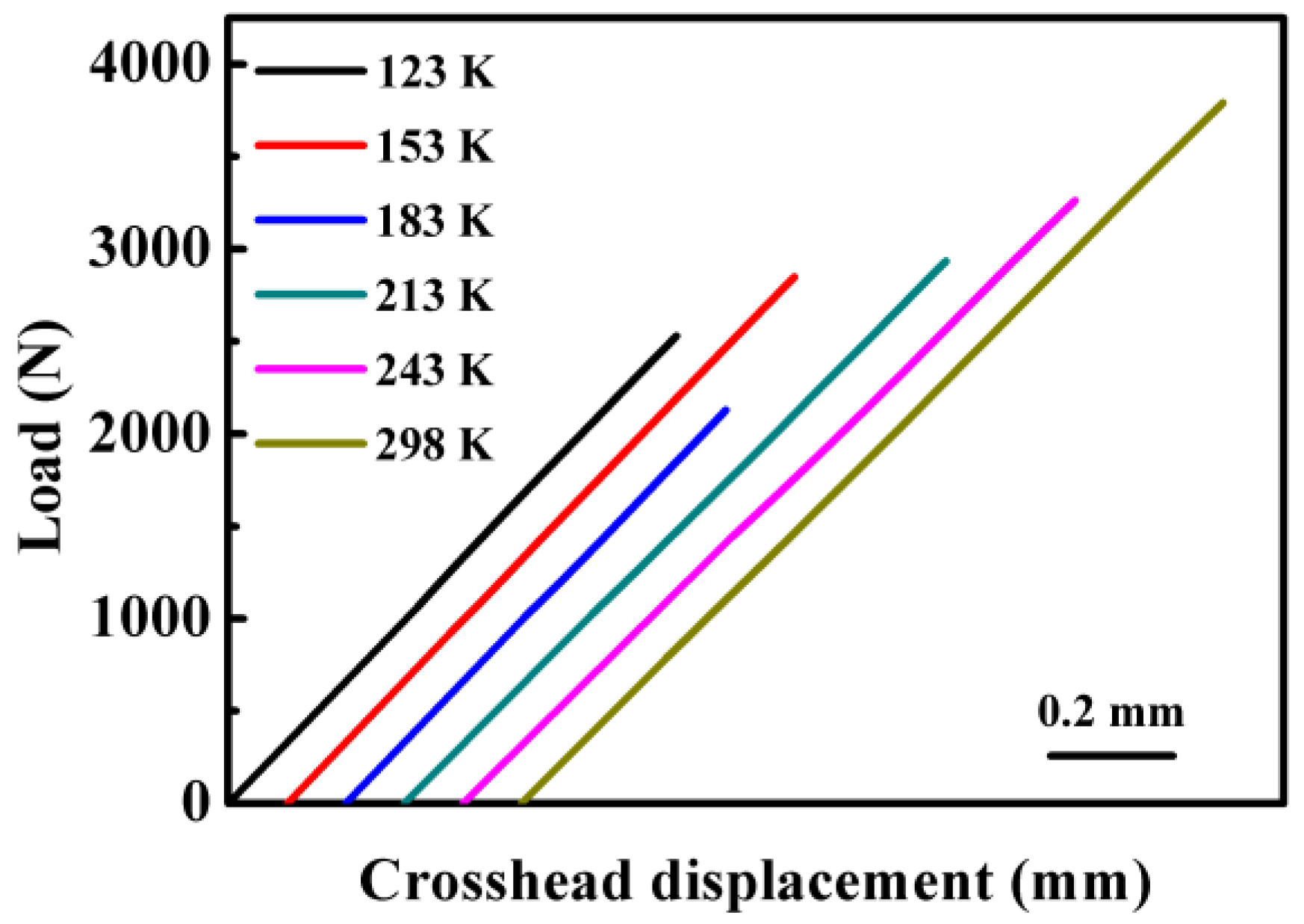
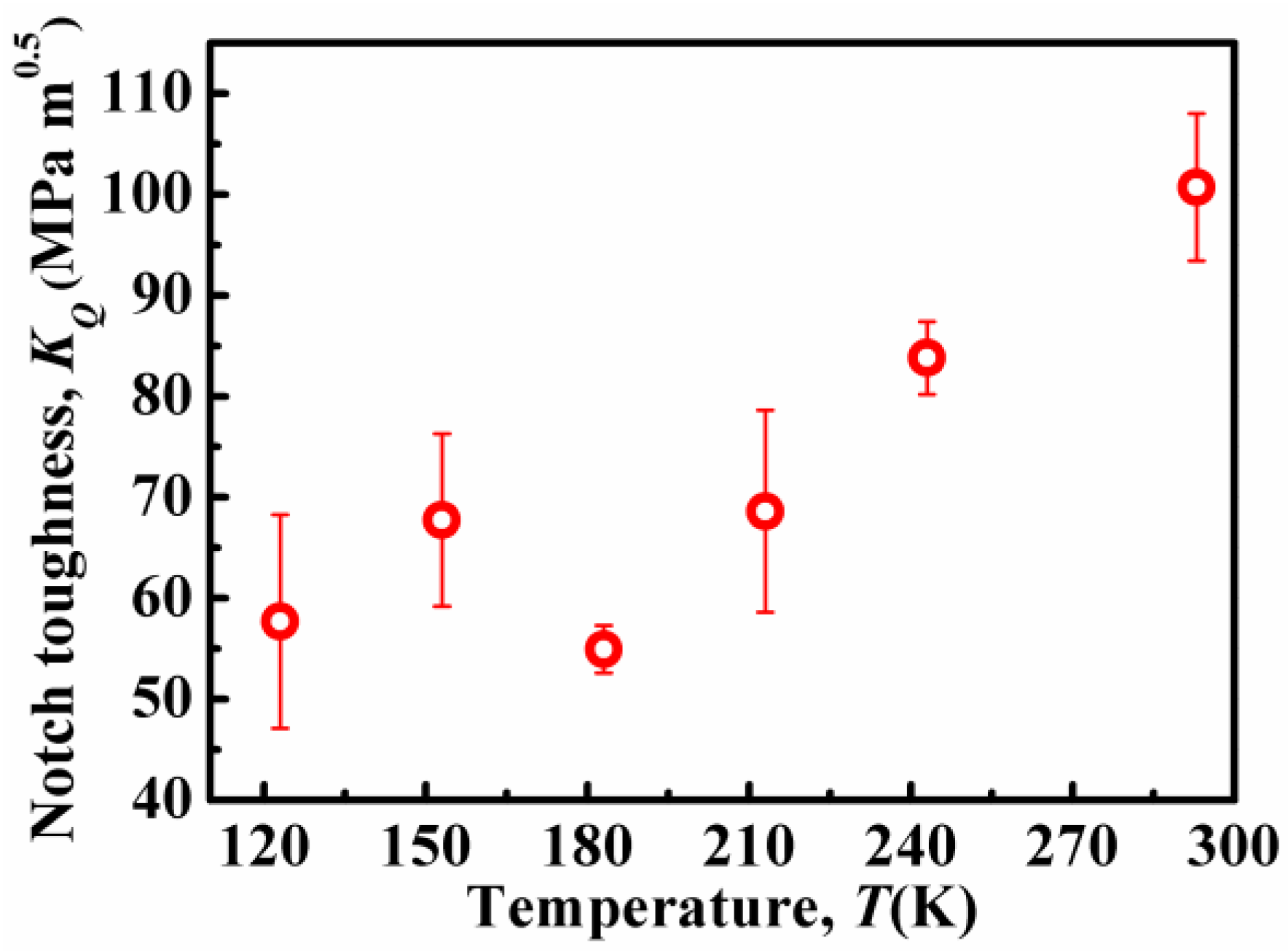
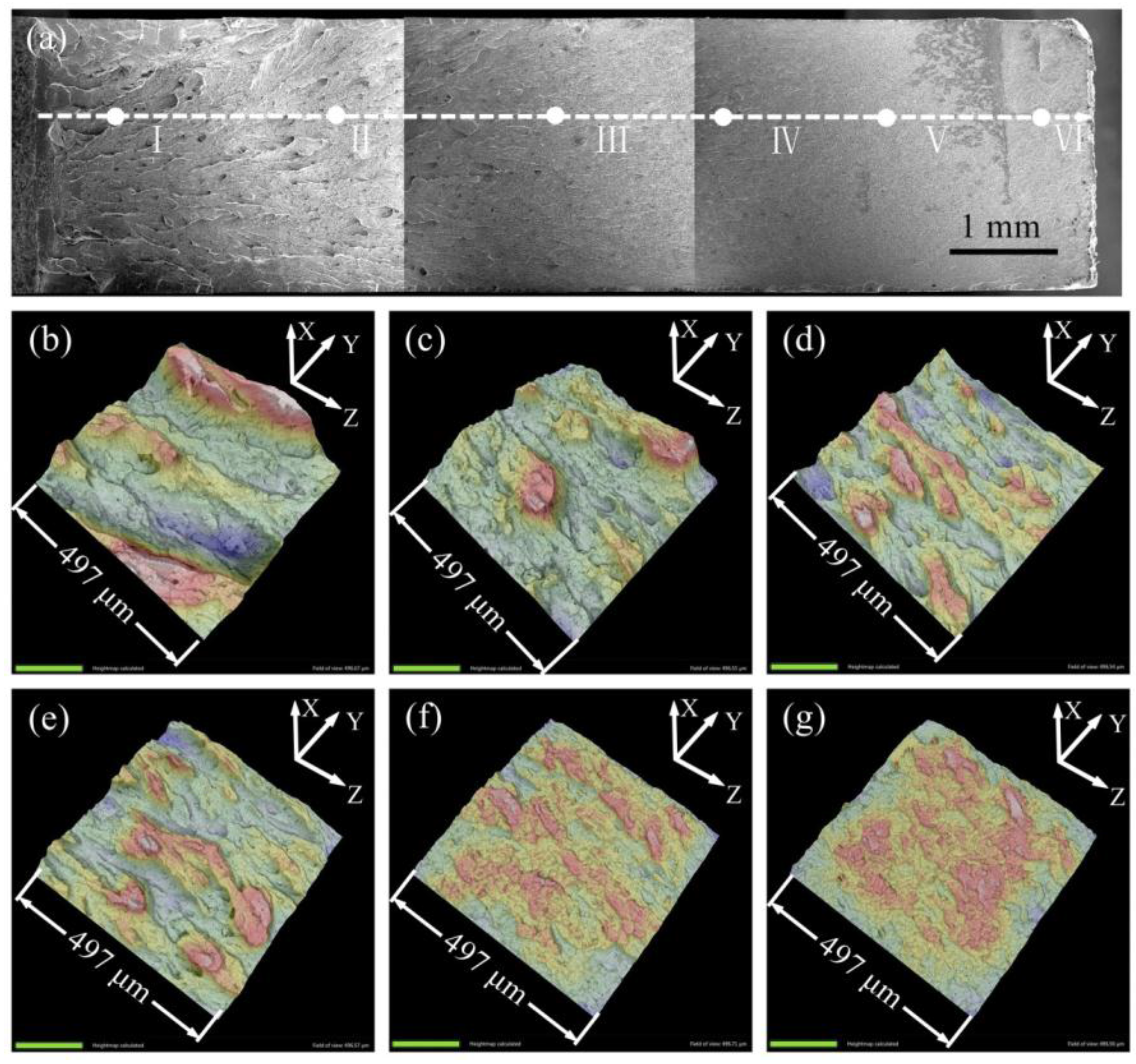
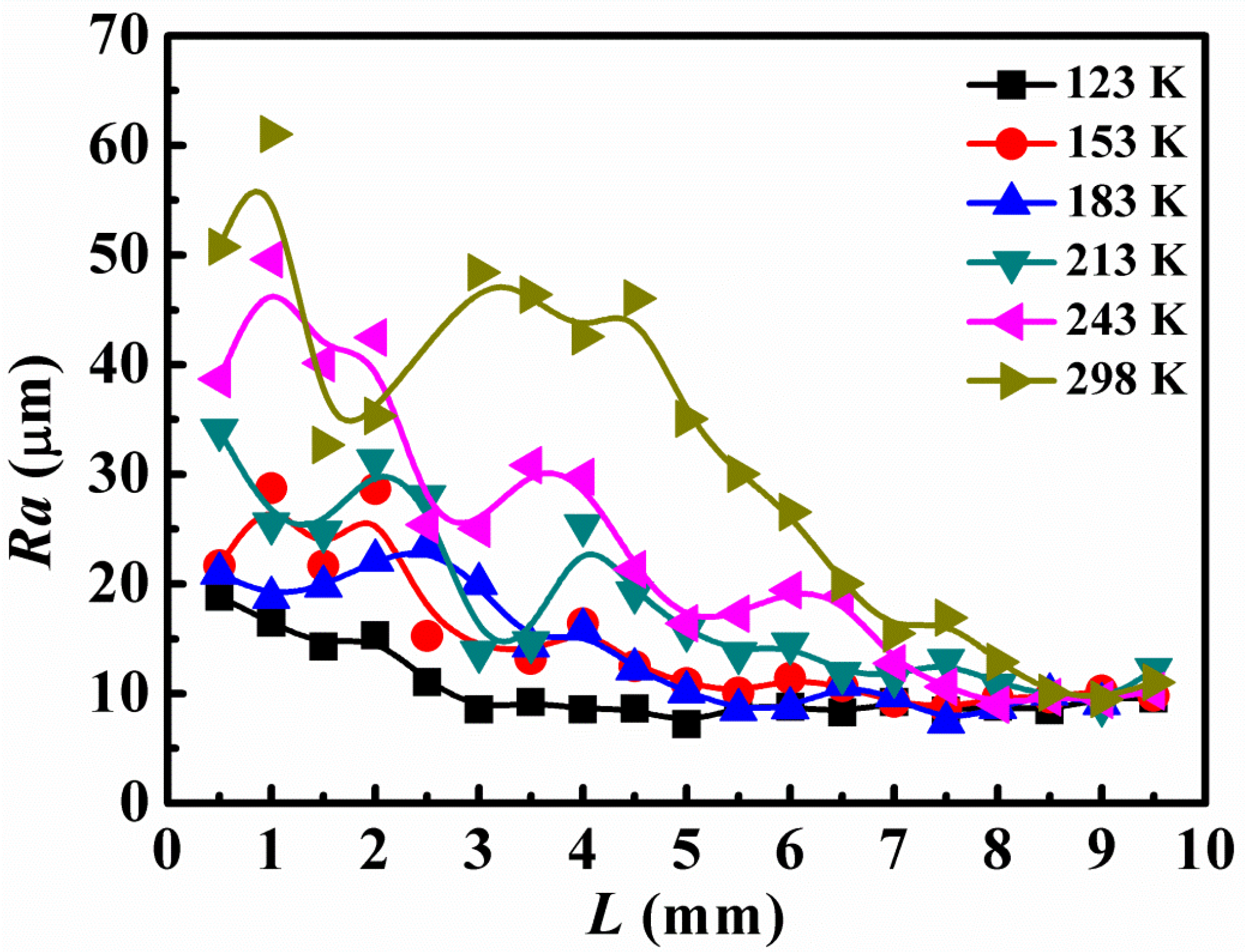
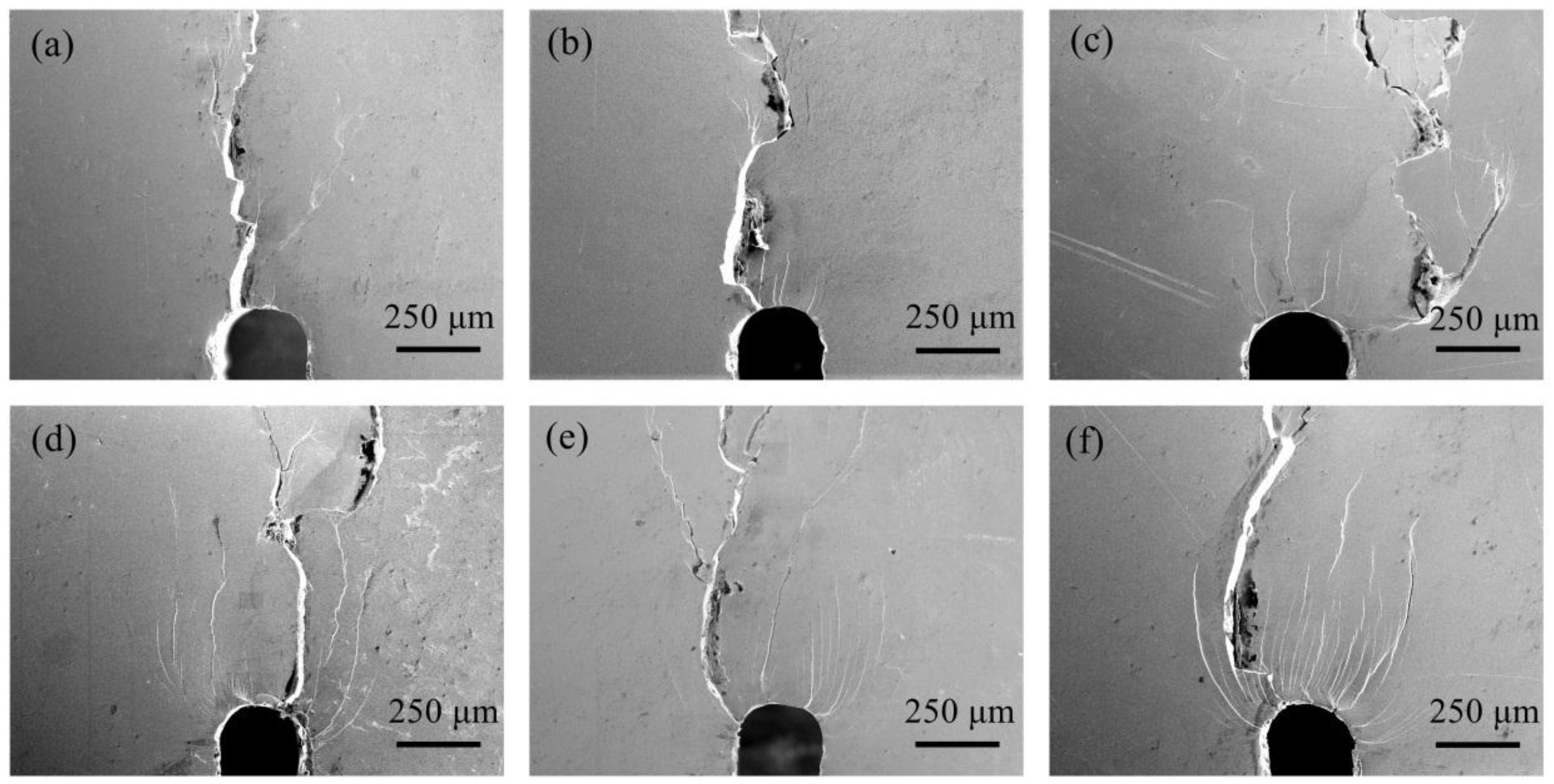

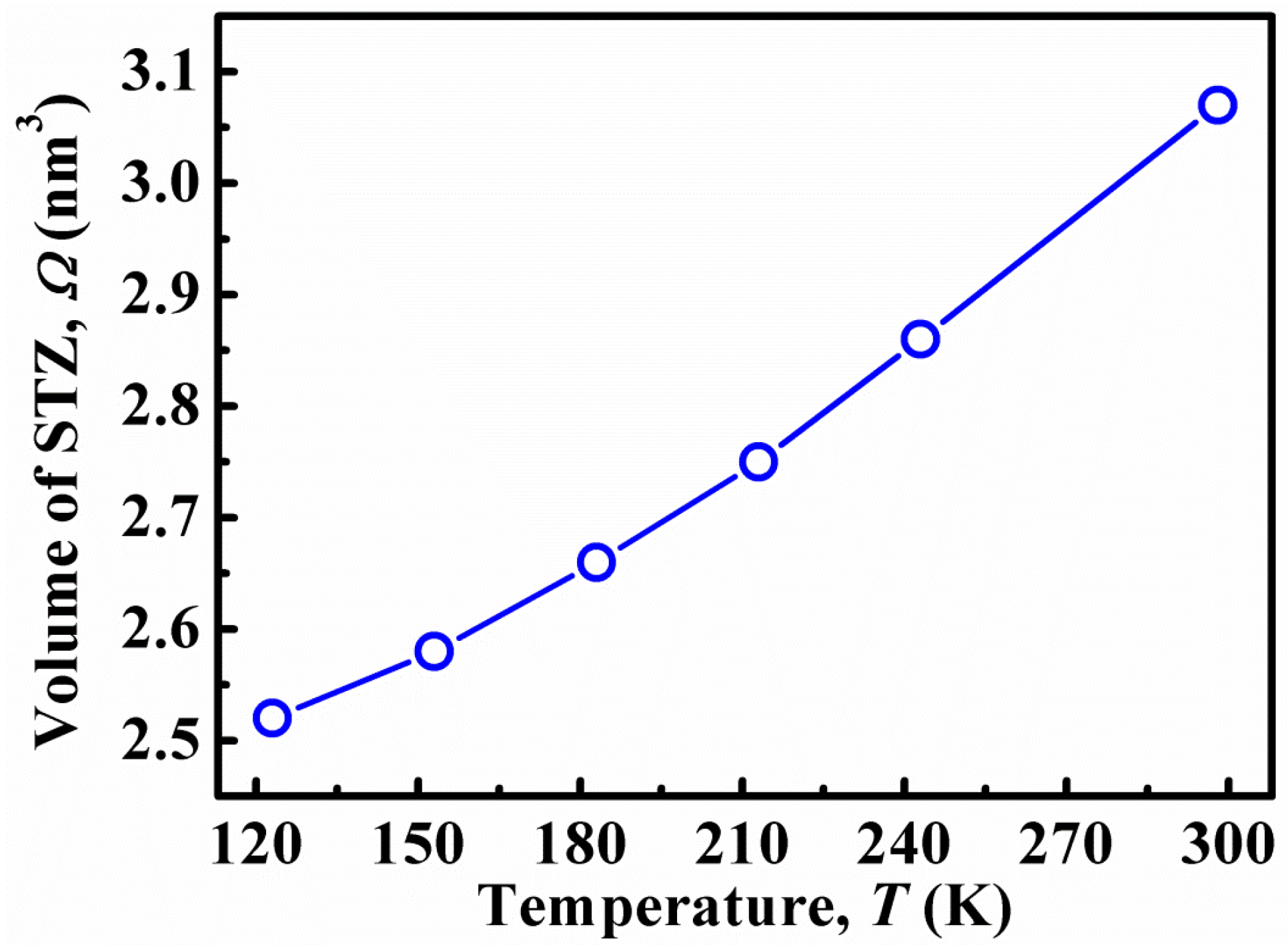
© 2017 by the authors. Licensee MDPI, Basel, Switzerland. This article is an open access article distributed under the terms and conditions of the Creative Commons Attribution (CC BY) license (http://creativecommons.org/licenses/by/4.0/).
Share and Cite
Zhou, Y.; Liu, J.; Han, D.; Chen, X.; Wang, G.; Zhai, Q. Reduced Fracture Toughness of Metallic Glass at Cryogenic Temperature. Metals 2017, 7, 151. https://doi.org/10.3390/met7040151
Zhou Y, Liu J, Han D, Chen X, Wang G, Zhai Q. Reduced Fracture Toughness of Metallic Glass at Cryogenic Temperature. Metals. 2017; 7(4):151. https://doi.org/10.3390/met7040151
Chicago/Turabian StyleZhou, Yihao, Jiaxin Liu, Dongxue Han, Xiangru Chen, Gang Wang, and Qijie Zhai. 2017. "Reduced Fracture Toughness of Metallic Glass at Cryogenic Temperature" Metals 7, no. 4: 151. https://doi.org/10.3390/met7040151




